National Doughnut Day, designated as the first Friday in June, turns out not to be a born-digital micro-holiday, as I had previously assumed. In fact, it dates back to 1938, having originated as a fundraiser for the Chicago-area Salvation Army. In celebration of this rich (buttery), deep (fried) history, I offer a few images from doughnut-related materials in our collections.
A couple of titles from our children’s literature collections reveal a theme of excess, with illustrations of delicious doughnut deluges!
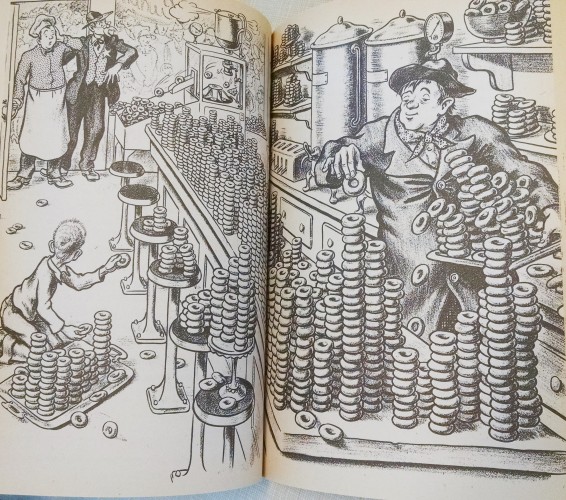
McCloskey, R. (1976). Homer Price. New York: Puffin Books
(http://mirlyn.lib.umich.edu/Record/013558219/), pgs. 60-61.
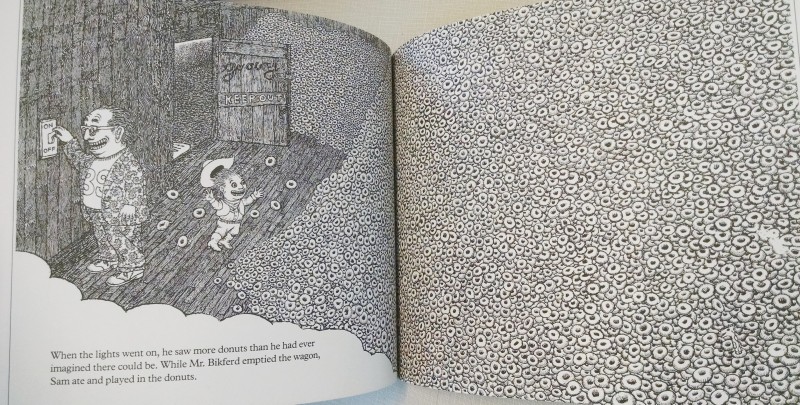
Stamaty, M. Alan. (1973). Who needs donuts? New York: Dial Press (http://mirlyn.lib.umich.edu/Record/006781855/), pgs. [13-14]
This bit of ephemera from Kern’s Bakery in Stockton, California (1928), found in the Janice Bluestein Longone Culinary Archive, offers some more and less factual claims about the doughnut’s nutritional virtues. I will leave to you all to discern embellishment from truth, as no sources addressing the healthful properties of doughnuts readily surfaced from our History of Medicine collections.
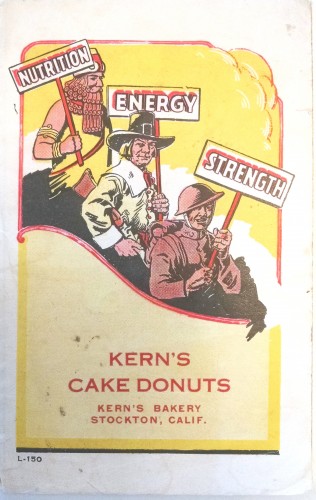
Kern's Cake Donuts (1928) (http://mirlyn.lib.umich.edu/Record/004613651), cover.
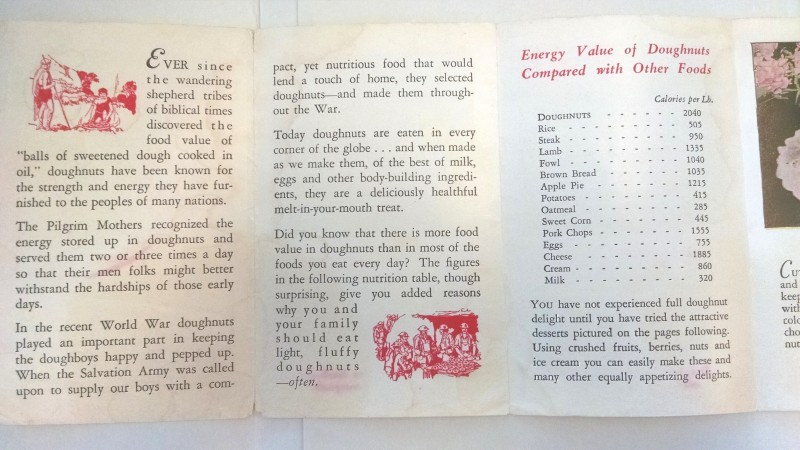
Kern's Cake Donuts (1928) (http://mirlyn.lib.umich.edu/Record/004613651), interior.
In this “children’s story” held in the Joseph A. Labadie Collection, the school children protest the removal of their beloved bus “conductress,” Maisie, and win the day when she is reinstated. The text touches on workers’ rights, women’s equality, transportation justice, anti-automation, and youth agency ("Children's Liberation," as the local subject heading penciled on the cover indicates), all in under five pages. To boot, our "favourite" fried dough comes out the hero!
![Stapled pamphlet cover, photocopy of hand-drawn bubble-lettering of the title "Dougnuts" [sic], and subtitle "a non-sexist children's story."](/sites/default/files/blogs/readingroom/img_20160603_131008849.jpg)
Doughnuts: A Non-sexist Children's Story.
Luton Beds, England: Partisan Books (http://mirlyn.lib.umich.edu/Record/002929826/), cover.
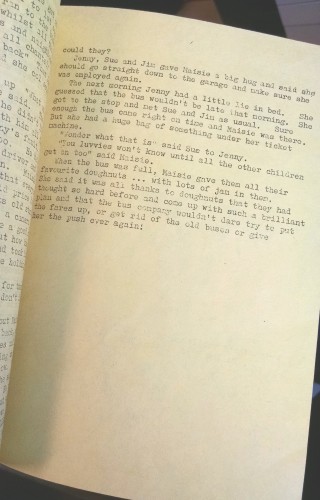
Doughnuts: A Non-sexist Children's Story.
Luton Beds, England: Partisan Books (http://mirlyn.lib.umich.edu/Record/002929826/), pg. [5].
Hungry for more? Have a look at the full list of our cataloged titles featuring doughnuts.